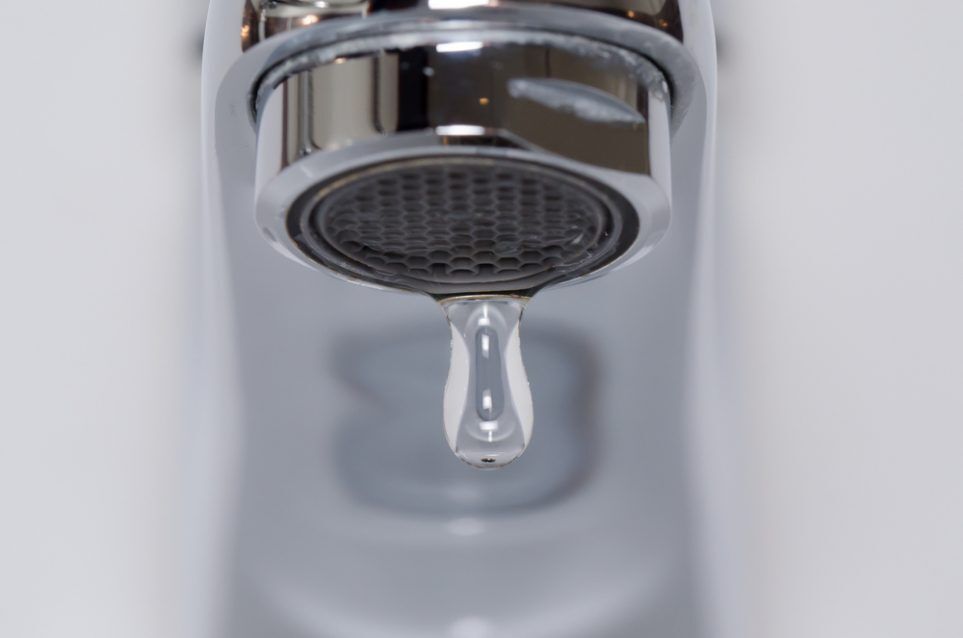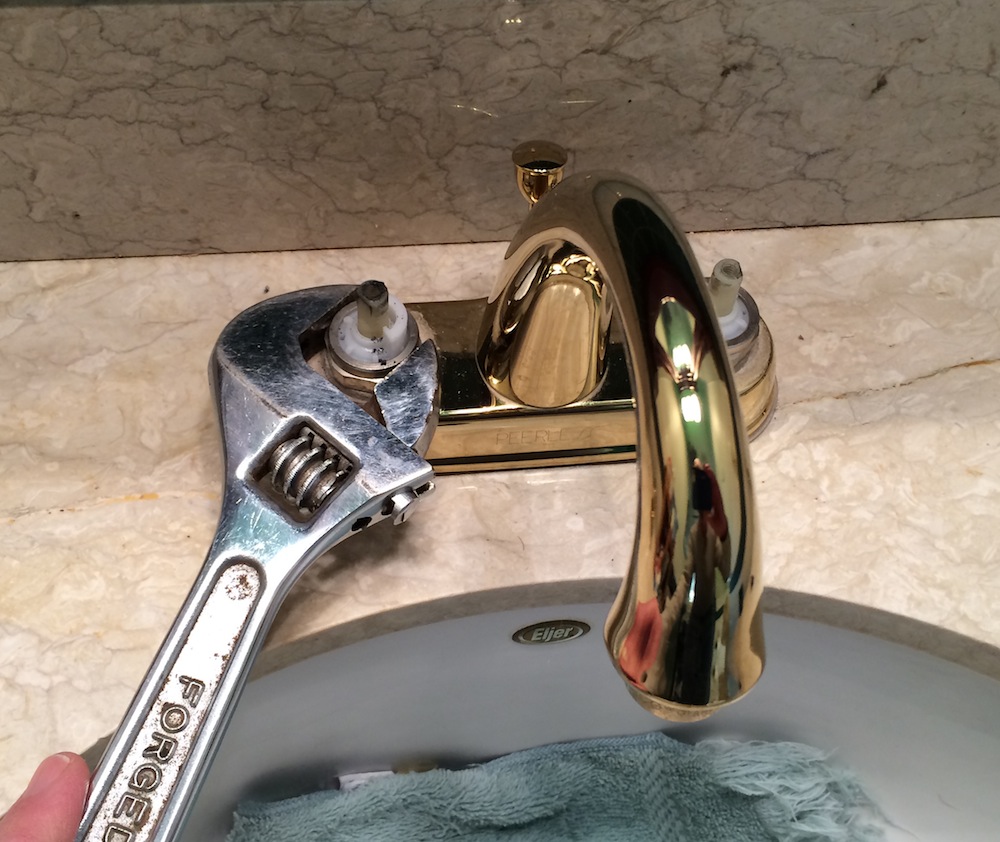How It's Important to Mend a Dripping Faucet
How It's Important to Mend a Dripping Faucet
Blog Article
We've come across the article involving Should I Repair or Replace a Leaky Faucet? directly below on the net and accepted it made perfect sense to relate it with you here.

Trickling faucets may feel like a minor aggravation, yet their effect surpasses simply the inconvenience of the noise. From drainage to incurring unnecessary monetary prices and health risks, disregarding a trickling tap can cause various consequences. In this short article, we'll explore why it's vital to resolve this usual house concern without delay and effectively.
Wastefulness of Water
Ecological Influence
Trickling faucets contribute significantly to water wastefulness. According to the Epa (EPA), a solitary faucet dripping at one drip per second can throw away greater than 3,000 gallons of water annually. This not only pressures water sources however also affects ecosystems and wild animals based on them.
Financial Costs
Raised Water Expenses
Beyond the ecological impact, trickling faucets can blow up water expenses considerably. The collected wastage with time equates right into higher energy expenses, which might have been stayed clear of with timely repairs.
Possible Building Damage
Furthermore, extended trickling can bring about damage to fixtures and surface areas surrounding the tap. Water accumulation can cause staining, rust, and even architectural concerns if left unattended, leading to additional fixing prices.
Health Issues
Mold and Mildew Growth
The continuous existence of dampness from a dripping faucet creates an excellent setting for mold and mildew and mold growth. These fungis not just jeopardize indoor air quality yet additionally present health and wellness dangers, particularly for people with breathing conditions or allergies.
Waterborne Illness
Stationary water in leaking faucets can become a breeding place for germs and other virus, boosting the risk of waterborne illness. Contaminants such as Legionella microorganisms thrive in stationary water, potentially causing serious illnesses when consumed or breathed in.
DIY vs. Expert Repair
Benefits and drawbacks of DIY Repair Work
While some might try to repair a leaking tap themselves, DIY repair work include their own set of difficulties. Without appropriate expertise and devices, DIY attempts can exacerbate the problem or cause insufficient repair services, lengthening the trouble.
Advantages of Working With a Professional Plumber
Hiring a professional plumber ensures that the underlying cause of the dripping tap is resolved properly. Plumbing professionals have the experience and devices to identify and repair tap problems effectively, saving time and decreasing the danger of additional damage.
Step-by-Step Guide to Fixing a Dripping Tap
Devices Called for
Before trying to deal with a dripping faucet, gather the necessary tools, consisting of an adjustable wrench, screwdrivers, substitute parts (such as washing machines or cartridges), and plumber's tape.
Common Tap Issues and Their Solutions
Recognize the kind of tap and the specific issue triggering the drip. Usual problems include damaged washers, corroded shutoff seats, or faulty O-rings. Refer to maker guidelines or on the internet tutorials for step-by-step support on repair work.
Preventive Measures
Routine Upkeep Tips
To stop dripping faucets, carry out routine maintenance such as cleaning up aerators, checking for leakages, and changing damaged components immediately. Furthermore, think about installing water-saving devices or updating to extra reliable components.
Relevance of Prompt Fixes
Attending to leaking faucets as soon as they're seen protects against additional water waste and prospective damage, inevitably conserving both water and money in the future.
Effect On Building Worth
Perception of Well-Maintained Property
Keeping a building in good condition, including resolving upkeep issues like leaking taps, enhances its regarded value and charm amongst potential purchasers or tenants.
Influence on Resale Worth
Characteristics with well-kept plumbing fixtures, including taps, command greater resale worths in the real estate market. Attending to trickling taps can contribute to a positive impression during residential property examinations and negotiations.
Environmental Obligation
Private Payment to Preservation
Taking obligation for taking care of leaking faucets lines up with wider efforts toward water conservation and ecological sustainability. Every person's activities collectively make a considerable impact on preserving precious resources.
Lasting Living Practices
By prioritizing timely repairs and adopting water-saving behaviors, individuals add to sustainable living methods that benefit both existing and future generations.
Final thought
Resolving a trickling tap exceeds mere convenience; it's an important step towards saving water, decreasing economic prices, and protecting health and building. Whether with DIY fixings or expert aid, acting to fix trickling faucets is a little yet impactful means to promote liable stewardship of resources and add to a much healthier, a lot more lasting future.
How to Fix a Leaky Faucet: Step-by-Step Repair Guide
A leaky faucet may seem like a simple annoyance, but if it's not fixed promptly, that leak could cost hundreds to potentially thousands. From water damage to mold, mildew, and high water bills, even a tiny leak can be catastrophic if left unattended. Damage like this can even affect the overall value of your home, so it's important to take the right approach for leaky faucet repair. You may need the help of a plumber in some cases, but we've got a few tips you can try on how to fix a leaky faucet before calling the pros.
Four Faucet Types
When you're learning how to fix a leaky faucet, the first step is knowing what kind of faucet you're working with! There are four common types.
Cartridge Faucets
Cartridge faucets come in one- or two-handled varieties. In one-handled cartridge faucets, hot and cold water combines in a single cartridge. In the two-handled versions, hot and cold water are controlled separately and mixed in the faucet.
Ball Faucets
Ball faucets have a single lever you push up and down to adjust the pressure and rotate to change the temperature. A slotted metal ball controls the amount of water allowed into the spout.
Compression Washer Faucets
They're the oldest type of faucet, but they're still used in many homes — especially older ones. Compression faucets have two separate handles that, when turned, raise or lower the washer that seals a water valve. This valve stops water from flowing through the faucet when it is turned off.
Disc Faucets
Disc faucets rarely need to be repaired due to their maintenance-free design. The water flow is controlled by two discs — the upper one raises and lowers against a fixed lower disc, creating a watertight seal. If your disc faucet starts leaking, you may need to replace the seals or clean residue buildup from the inlets.
Fixing a Leaky Faucet
Step 1: Turn Off the Water
Whether you're learning how to fix a leaky bathtub faucet or how to fix a leaky kitchen faucet, always turn off the water supply to your working area when you're fixing a leak. The last thing you want is a flood added to your list of things to fix.
Look for the shutoff valves below your sink or around the tub and turn them clockwise to stop the water flow. If your faucet doesn't have shutoff valves, you may need to turn off the water for the whole house. Check to make sure it's off by turning the faucet on. If nothing comes out, you're ready to start the repair.
Step 2: Take Apart the Faucet
How you disassemble your faucet depends on the type of fixture you have. You can use a flathead screwdriver to remove the caps on top of the handle or handles for cartridge and compression faucets. Inside, you should see handle screws. Unscrew these with a screwdriver to remove the handle.
Disc- and ball-style faucets will typically have an inlet screw near the handle, and removing that will reveal the interior of the faucet.
Detach the Valve Stem
For cartridge- and compression-style faucets, you'll see the inner valve stem or cartridge once you remove the faucet handles. If you have a compression faucet, unscrew the brass valve stem. If you have a cartridge faucet, pull out the cartridge. If your cartridge has been in place for a while, it may require some tools or extra force to remove it due to mineral deposits.
Examine and Replace Parts
Once you've removed the parts, check them out to confirm what needs to be replaced. You may see corroded rubber washers, O-rings, stems, or cartridges. On a ball-style faucet, check the seats and springs for damage.
If you need to repair a leaky disc faucet, check the inlet and seals on the lower disc.
Once you determine what parts must be replaced, visit your local hardware store. Bring the damaged parts with you to ensure you can purchase the correct components to replace them.
Clean Valves and Faucet Cavity
If you've removed a stem or cartridge, you may notice mineral buildup in the faucet's threads. Use white vinegar to clean the valve seat by soaking it for a few minutes, then scrub it away with a soft toothbrush and rinse with warm water. You can also clean the interior of the faucet in the same way.
Reassemble the Faucet
Once your faucet is cleaned and the required parts have been replaced, it's time to reassemble it. Put the pieces back together and slowly turn the water supply back on. Doing this slowly is crucial because too much initial water pressure can damage the new hardware you've just installed.
https://homewarranty.firstam.com/blog/how-to-fix-leaky-faucet

We are very enthusiastic about and I hope you enjoyed our entry. Do you know another individual who is curious about the subject? Take a moment to share it. Many thanks for your time. Come back soon.
Report this page